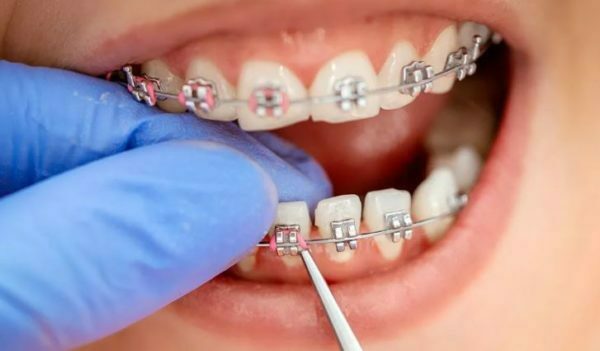5 Key Signs You May Need Braces

Braces are used for much more than just aesthetic purposes.
A crooked smile can damage the mouth through infections, jaw problems and tooth decay.
Braces are most effective if applied as a child, yet they can be effective on adults as well.
The following five signs indicate that someone could benefit from utilizing braces as a treatment.
1. Crowded teeth
Teeth become crowded when the mouth doesn’t have enough space to house every tooth. As a result, underbites and overbites can form. Underbites and overbites can skew teeth placement which will make it difficult to floss. If one doesn’t floss, plaque will build up and cause cavities. Braces can even-out the teeth and fix both underbites and overbites. If one has a crowded mouth, getting braces can prevent a lot of medical issues that could arise in the future. It may take up to two years to fix crowded teeth, and it could take longer if the crowding is severe.
2. Gaps between teeth
Diastema is the term for having gaps between one’s teeth. They occur when the tooth is not in the same proportion to the jaw. They can also be formed with habits such as thumb-sucking and having an aggressive swallowing reflex. Braces can align the teeth to seal off noticeable gaps. If gaps are left unchecked, one could develop gum disease. The gum would be defenseless without it’s teeth and will become a target for plaque. Although gaps appear harmless, braces can close them off to prevent gum disease from forming and causing extreme damage.
3. Trouble biting down comfortably
Malocclusion is used to describe the situation in which the jaw doesn’t bite down nicely. The teeth are usually out of place and don’t allow the jaw to close to its normal capacity. This can be a very painful and annoying condition to endure. Common activities like talking and eating require the jaw to open and close many times. Braces can rearrange the teeth so that they will fit nicely into each other. If left untreated, a misaligned bite can develop into serious complications.
4. Jaw pain
If one has jaw pain, there is a chance that it is the result of any of the above-mentioned mouth disorders. Underbites, overbites, diastemas and malocclusions can cause teeth grinding or other bad habits. These problems can afflict the temporomandibular joint and cause a TMJ disorder. Luckily, braces can straighten out teeth, which can take away the problems that misaligned teeth cause. If left untreated, a TMJ disorder can cause additional complications like headaches, neck or back pain. If one has problems with their teeth and experiences jaw pain, consulting with a TAO Orthodontist can lead to possible treatment options. By fixing the root of the problem, jaw pain can be dealt with through braces.
5. Having difficulty speaking or chewing
People can have difficulty pronouncing certain words when their teeth get in the way of making correct movements. Braces can fix alignments and make talking easy once again. Misaligned teeth can also cause extreme pain. Due to being in unnatural positions, teeth can collide with one another when eating or talking. Braces can stop these collisions by having the teeth return to their proper locations. It is never too late to get braces, and the benefits can be substantial.
Children should be brought to an orthodontist by age 7 or sooner if they have any mouth-related discomfort. Adults should see one as well, for braces can fix a long list of problems. Not only will one’s smile look great when the braces come off, but one will feel a lot better and have a healthy outlook for the future.
